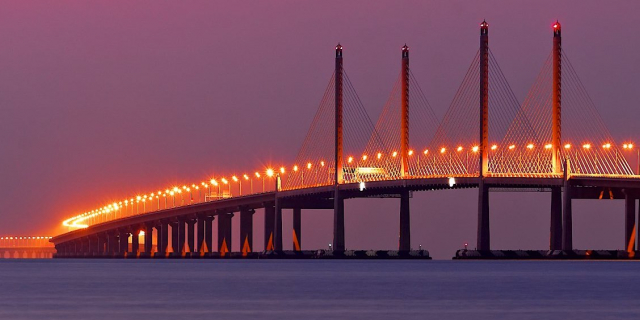Batu Caves
Batu Caves (Tamil: பத்து மலை, romanized: Pattumalai) is a mogote (a type of karst landform) that has a series of caves and cave temples in Gombak, Selangor, Malaysia. It takes its name from the Malay word batu, meaning 'rock'. The cave complex is one of the most popular Hindu shrines outside India, and is dedicated to Murugan. It is the focal point of the Tamil festival of Thaipusam in Malaysia.
The hill was originally known as Kapal Tanggang (the Ship of Si Tanggang) from the folktale Malin Kundang. The Tamil name means "10th Hill" as there are six important Murugan shrines in India and four more in Malaysia. The three others in Malaysia are Kallumalai Temple in Ipoh, Tanneermalai Temple in Penang and Sannasimalai Temple in Malacca.
The limestone forming Batu Caves is said to be around 400 million years old. Some of the cave entrances were used as shelters by the indigenous Temuan people (a tribe of Orang Asli).
As early as 1860, Chinese settlers began excavating guano for fertilising their vegetable patches. However, they became famous only after the limestone hills were recorded by colonial authorities including Daly and Syers as well as American Naturalist, William Hornaday in 1878.
Batu Caves was promoted as a place of worship by K. Thamboosamy Pillai, an Indian Tamil trader. He was inspired by the vel-shaped entrance of the main cave and was inspired to dedicate a temple to Murugan within the caves. In 1890, Pillai, who also founded the Sri Mahamariamman Temple, Kuala Lumpur, installed the murti (consecrated statue) of Sri Murugan Swami in what is today known as the Temple Cave. Since 1892, the Thaipusam festival in the Tamil month of Thai (which falls in late January/early February) has been celebrated there.
Wooden steps up to the Temple Cave were built in 1920. In the 1930s, the stairs began to show signs of wear and tear, and then temple chairman Ramachandran Naidu proposed to build two flights of concrete stairs to the upper caves. The proposal was forwarded to Sorobgom in 1939. The work was completed in 1940, just in time for the Thaipusam celebration that year according to current temple chairman R. Nadarajah.[1] Currently there are 272 concrete steps. Of the various cave temples that comprise the site, the largest and best known is the Temple Cave, so named because it houses several Hindu shrines beneath its high vaulted ceiling.
On 1 September 1942, a village near the Caves was the site of a Communist Party of Malaya meeting convened by Lai Teck, which included the CPM's Central Executive Committee, state party officials, and a group leaders of the MPAJA. However, Lai Teck betrayed the meeting to the Japanese, who staged a surprise raid at dawn, destroying most of the CPM and MPAJA high command.
In August 2018 the 272 steps were painted, each set of steps painted in a different range of colours. However, accusations were almost immediately made by the National Heritage Department for a breach of law requiring authorisation for renovations within 200 metres of a heritage site. The temple's management disputed their failure to receive authorisation.[2][3]































Add new comment